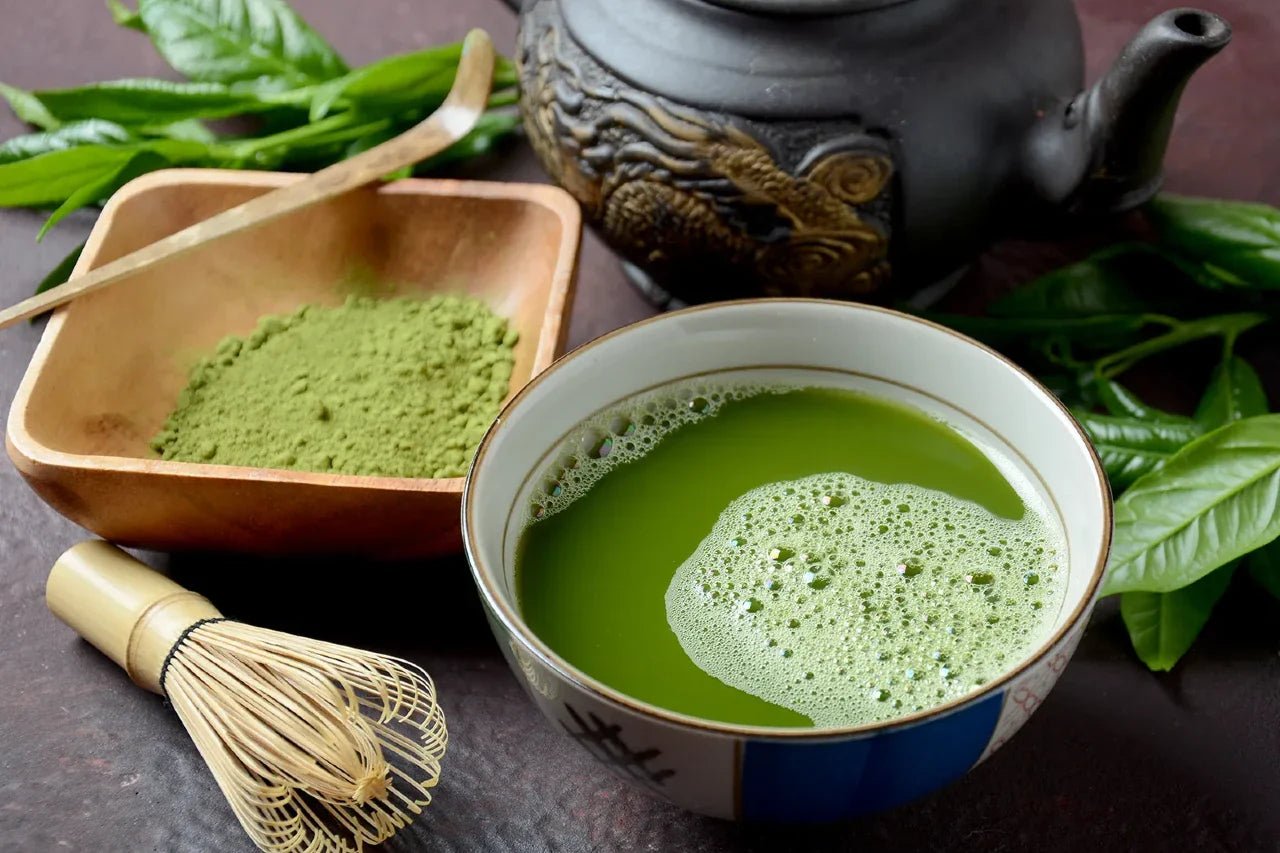No Products in the Cart

When it comes to choosing between matcha and green tea, it can be a bit confusing. Both are celebrated for their health benefits and delightful flavors, but they’re actually quite different in how they’re grown, prepared, and consumed. In this guide, we’ll explore the key differences between matcha and green tea, so you can decide which one suits your lifestyle and preferences best. Let’s dive in!
Both matcha and green tea have deep roots in Asian culture and are known for their distinct flavors and numerous health benefits. While they come from the same plant, Camellia sinensis, their similarities pretty much end there.
The purpose of this comparison is to help you understand the unique characteristics of each tea, so you can make an informed choice. Whether you're looking for a calming cup to start your day or a powerful energy booster, understanding the differences between matcha and green tea will guide you to the perfect brew.
One of the biggest differences between matcha and green tea lies in their preparation methods:
Matcha: This vibrant green powder is made by grinding the entire tea leaf into a fine powder. The tea plants used for matcha are shade-grown for several weeks before harvest, which boosts their chlorophyll content and gives matcha its characteristic bright green color. The leaves are then steamed, dried, and stone-ground into a powder. When you drink matcha, you consume the whole leaf, which is why it has a stronger flavor and more concentrated nutrients.
Green Tea: Traditional green tea, on the other hand, is made by steeping the leaves in hot water and then discarding them. The tea is typically lighter in color and flavor, and the preparation is much simpler. You can find green tea in various forms, such as loose leaf or tea bags, and it’s often enjoyed without any additives.
Due to its unique preparation, matcha offers a more potent nutritional profile compared to regular green tea:
Matcha: Since you’re consuming the whole leaf, matcha contains a higher concentration of antioxidants, particularly catechins, which are known to help fight free radicals in the body. It also has more caffeine than green tea, providing a smoother and longer-lasting energy boost without the jitters. Additionally, matcha contains L-theanine, an amino acid that promotes relaxation and focus.
Green Tea: While green tea also contains antioxidants and caffeine, the levels are much lower than matcha. This makes it a milder option that can be enjoyed multiple times a day without the risk of overstimulation. Green tea is an excellent choice for those who want a gentle energy boost and hydration without the intensity of matcha.
Both matcha and green tea offer a variety of health benefits, but there are some key differences worth noting:
Energy Boost: The combination of caffeine and L-theanine in matcha provides a calm, focused energy boost. It’s a great alternative to coffee, offering sustained energy without the crash.
Enhanced Focus: Thanks to the high levels of L-theanine, matcha can improve concentration and cognitive function, making it perfect for those long study sessions or busy workdays.
Detoxification: The chlorophyll in matcha helps to detoxify the body by removing heavy metals and other toxins.
Hydration: With its lower caffeine content, green tea is more hydrating and can be enjoyed throughout the day without disrupting your sleep cycle.
Weight Management: Green tea has been shown to boost metabolism and aid in fat burning, making it a popular choice for those looking to manage their weight.
Heart Health: Regular consumption of green tea has been linked to improved heart health, thanks to its ability to reduce LDL cholesterol and triglycerides.
Matcha and green tea can be used in various ways, depending on your taste and culinary creativity:
Matcha: Due to its powdered form, matcha is incredibly versatile. You can use it to make traditional matcha tea by whisking it with hot water, or get creative by adding it to smoothies, lattes, and even baked goods like cookies and cakes. Its vibrant color and unique flavor make it a favorite ingredient in many modern recipes.
Green Tea: While green tea is most commonly enjoyed as a hot or iced beverage, its uses don’t stop there. You can incorporate green tea into soups, stews, or even use it as a base for marinades and sauces. It’s a simple, refreshing addition to many dishes, providing a subtle hint of flavor without overpowering the other ingredients.
To sum it up, both matcha and green tea have their own unique qualities and benefits. If you’re looking for a concentrated source of antioxidants, a smooth energy boost, and a versatile ingredient for creative recipes, matcha is the way to go. On the other hand, if you prefer a lighter, more hydrating drink that you can enjoy any time of day, green tea is your perfect match.
Ultimately, why choose one when you can enjoy both? Each offers a distinct experience and set of benefits that can complement different aspects of your life. So why not explore the best of both worlds? Give them a try and find out which one becomes your new favorite!